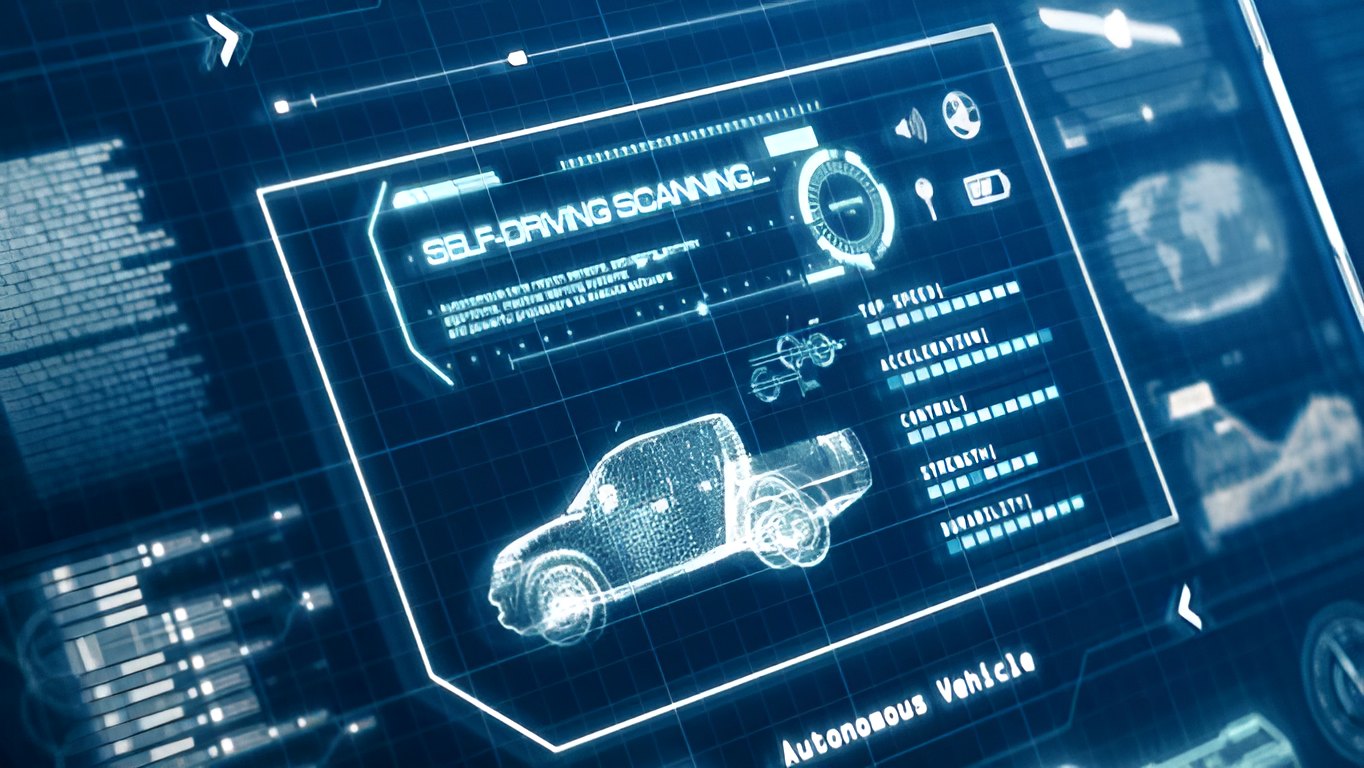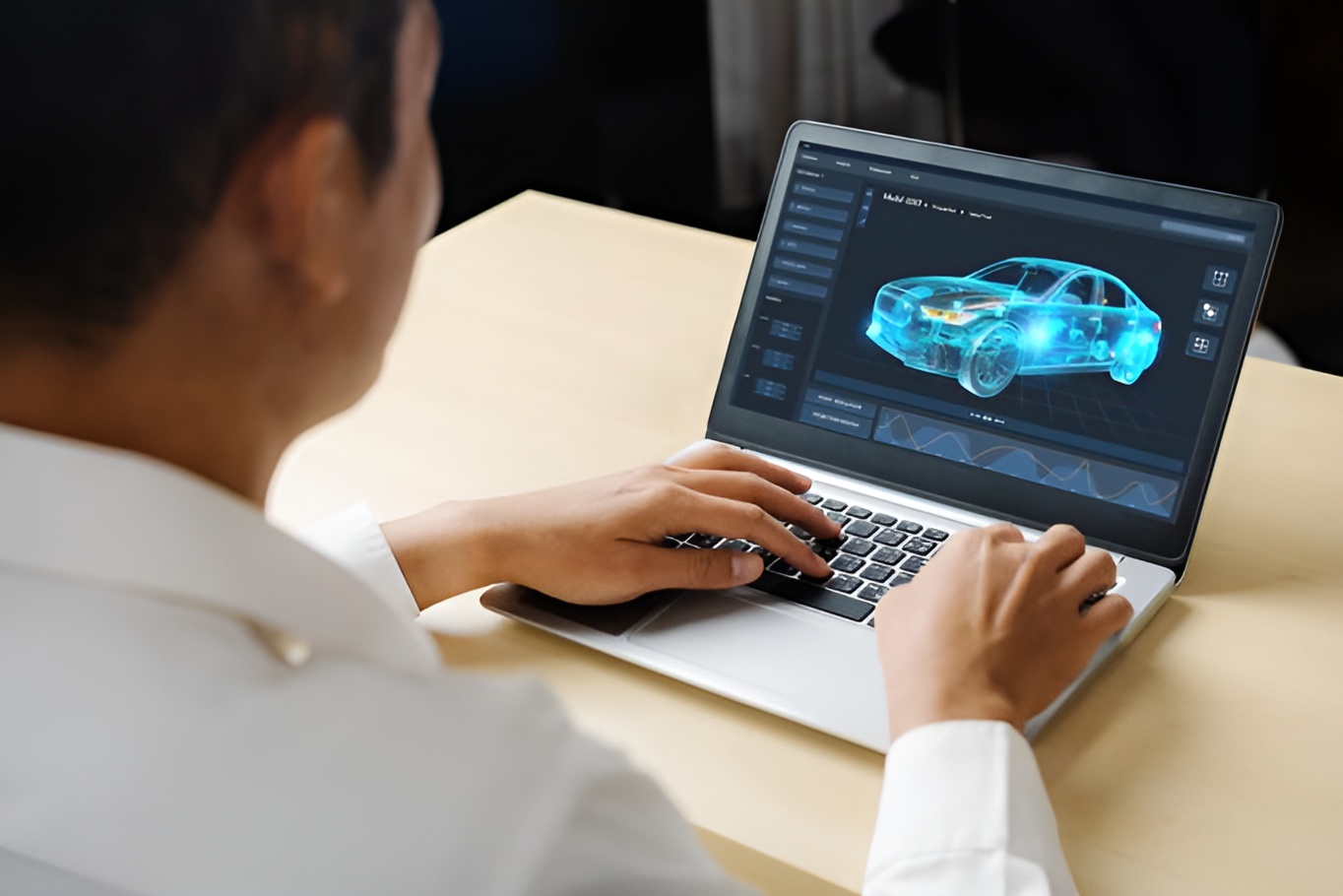Consider the last time you purchased a mobile phone. The primary decision factor likely centered around the operating system and user experience rather than processor specifications or hardware capabilities. This shift from hardware-focused to software-driven decision-making represents a profound transformation in consumer technology. Mobile devices have evolved into software platforms where hardware serves as an enabler, quietly advancing in the background while software experiences take center stage. This transformation provides a powerful blueprint for the automotive industry’s current evolution.
Software: The new engine of automotive innovation

The automotive industry stands at a pivotal moment. According to McKinsey’s 2023 report, software content in vehicles will grow at 11% annually through 2030, with the automotive software market expected to reach $50 billion. This growth reflects a fundamental reimagining of vehicles as software platforms on wheels. Electric vehicle manufacturers, particularly in China, have already demonstrated the power of this approach. These companies launch new models every 12-18 months, continuously enhance vehicle capabilities through over-the-air updates, and maintain deep software-based relationships with their customers throughout the vehicle lifecycle.
Traditional automotive development cycles, which often stretched four to five years, now face pressure to compress into 18–30-month windows. This acceleration demands new approaches to development, testing, and validation. Software-defined vehicles enable manufacturers to release base models and progressively enhance functionality through software updates, similar to smartphone platforms. Features like advanced driver assistance systems, battery management optimization, and even vehicle performance can be upgraded without physical modifications.
Ecosystem evolution

The transformation toward software-defined vehicles has catalyzed rapid advancements in traditional automotive supply chains. Tier 2 suppliers, particularly semiconductor manufacturers and engineering service providers, have moved beyond their traditional roles as component suppliers. These organizations now collaborate to create scalable platforms that support automotive OEMs throughout the development lifecycle.
Modern automotive development requires integrated ecosystems where silicon providers think beyond chip specifications to system-level solutions, and engineering service providers bridge the gap between hardware capabilities and software requirements. These partnerships create development environments where OEMs can rapidly prototype, test, and deploy new features without waiting for physical hardware availability.
Software-first development framework
The automotive industry is also undergoing another fundamental change in how vehicles are developed, validated, and deployed. At the heart of this revolution lies a sophisticated software-first development framework that seamlessly integrates safety, speed, and innovation. This framework reimagines the entire engineering process through a digital-first lens.
Safety serves as the cornerstone of this new paradigm. Incorporating Automotive Safety Integrity Level (ASIL) requirements during the earliest stages of design and development helps manufacturers ensure that safety isn’t merely a compliance checkbox. This proactive approach to safety engineering, combined with rapid deployment capabilities, creates a development ecosystem that maintains the highest safety standards while dramatically reducing time-to-market.
The new development framework rests on advanced software-driven architecture. Engineering teams now operate in sophisticated virtual development environments that transcend traditional hardware limitations. These environments leverage high-fidelity software simulators that precisely emulate critical hardware components—from complex CPUs to specialized digital signal processors (DSP) and neural processing units (NPU). This virtualization enables development teams to innovate and iterate months before physical hardware becomes available, drastically changing the development timeline.
Cloud technology serves as a force multiplier in this framework. It transforms virtual development environments into globally accessible collaborative platforms. Cloud integration eliminates geographical barriers and time zone constraints. This democratization of development resources enables continuous innovation, with engineers worldwide contributing to and validating features in real-time.
The software-first development framework also revolutionizes testing methodologies through a paradigm shift from hardware-centric to software-first validation. While hardware-in-loop testing remains crucial for final validation, software-in-loop testing now enables early detection and resolution of potential issues, dramatically reducing development costs and risks. Virtual validation environments can simulate countless edge cases and safety-critical scenarios that would be impractical or dangerous to test with physical vehicles, ensuring thorough validation without compromising safety or efficiency.
From a systems integration perspective, this framework brings together an unprecedented ecosystem of partners. Cloud providers, technology partners, and enablers collaborate seamlessly under a unified development umbrella. The integration of model-based engineering with advanced generative AI capabilities introduces new levels of agility and innovation to the development process. This convergence of technologies and expertise creates a development environment that is greater than the sum of its parts, enabling automotive manufacturers to push the boundaries of what’s possible in vehicle development.
Transforming OEM operations
This ecosystem approach delivers transformative benefits to automotive manufacturers. Research from Gartner indicates that software-first development approaches reduce automotive feature development cycles by 40-60% compared to traditional methods. This acceleration enables manufacturers to respond more quickly to market demands and competitive pressures.
Virtual development environments fundamentally change the testing and validation process. Teams can complete 70-80% of testing before building physical prototypes, significantly reducing development costs and accelerating time to market. This early testing capability enables parallel development across global teams, with engineers working simultaneously on different aspects of vehicle systems.
The impact extends beyond development efficiency. OEMs gain unprecedented flexibility in feature deployment and vehicle differentiation. New capabilities can be developed, tested, and deployed through software updates, enabling continuous improvement throughout the vehicle lifecycle. This approach allows manufacturers to respond rapidly to market demands and maintain competitive advantages through software innovation.
Major challenges in automotive’s digital transformation
The automotive industry’s journey toward software-first development faces several interconnected challenges that require careful navigation and strategic solutions. These challenges span organizational, technical, and financial dimensions, creating a complex landscape that industry leaders must address.
The competency gap
For decades, automotive engineering has been anchored in mechanical expertise, with deep knowledge of powertrains, materials, and physical systems. Today’s software-first approach demands a sophisticated fusion of this traditional mechanical knowledge with advanced software engineering skills. This isn’t simply about hiring software developers; it requires building teams that can seamlessly integrate software capabilities with complex mechanical systems while maintaining the industry’s rigorous safety and reliability standards. Engineers must now understand both the physical dynamics of vehicle systems and the intricacies of software architecture, real-time operating systems, and embedded software development.
The need for agnostic, real-time solutions
The challenge of cloud integration extends far beyond simple application hosting. Automotive development requires a sophisticated cloud infrastructure that can handle the unique demands of system-on-chip (SoC) workloads in real time. This presents a particularly complex challenge because automotive systems must process vast amounts of sensor data and make split-second decisions with absolute reliability. Running these workloads in the cloud while maintaining real-time performance requires innovative solutions that don’t currently exist at scale. Further, the need for cloud provider agnosticism adds another layer of complexity—manufacturers must develop solutions that work consistently across different cloud platforms to avoid vendor lock-in and ensure global accessibility of development resources.
Escalating R&D investments
R&D costs have risen dramatically as automotive companies simultaneously pursue advances in three critical areas:
- Software-first development: The investment in software development infrastructure, tools, and talent represents a significant new cost center. This includes building virtual development environments, simulation capabilities, and testing frameworks that didn’t exist in traditional automotive development.
- Electric powertrain technology: The transition to electric vehicles demands massive investment in battery technology, power electronics, and thermal management systems. These developments must proceed in parallel with software advances, as modern EVs rely heavily on sophisticated software control systems.
- Connected ecosystem development: Creating and maintaining a connected vehicle ecosystem requires investment in cloud infrastructure, cybersecurity, over-the-air update capabilities, and data analytics platforms. This connected infrastructure must support both current vehicles and future innovations while maintaining strict security and reliability standards.
The convergence of these investments creates a significant financial burden, particularly challenging for traditional automotive manufacturers who must maintain their conventional vehicle programs while funding these new initiatives. This financial pressure is intensified by the need to compete with well-funded tech companies entering the automotive space, which often have deeper software expertise and more experience with rapid development cycles.
Engineering partnership in the software-first era
The transition to software-first development requires automotive manufacturers to rethink their engineering partnerships. Global engineering service providers with deep expertise across mechanical, electronics, and software domains serve as crucial accelerators in this transformation. Companies like Quest Global, with over two decades of product engineering experience across multiple industries, provide automotive OEMs with the technical depth and ecosystem connections needed to build scalable software-first platforms. These engineering partnerships deliver particular value through the following:
- Ready-to-deploy software development environments that reduce setup time and accelerate development
- Virtual testing platforms that integrate with existing OEM workflows
- Global engineering teams that bring cross-industry software expertise to automotive challenges
- Established relationships with silicon providers and technology partners that enable system-level optimization
Working with established engineering service providers gives OEMs access to proven development frameworks and testing methodologies without the need to build these capabilities internally. This approach allows manufacturers to focus on their core competencies while leveraging partner expertise for software platform development and ecosystem integration.
Quest Global is pioneering the software-first approach to revolutionize autonomous driving and ADAS features by seamlessly integrating advanced simulation and real-world testing into a single platform. Leveraging the CARLA simulator, we develop, test, and validate autonomous driving use cases and cutting-edge ADAS (Advanced Driver Assistance System) features in a virtual environment, ensuring robustness and precision before deploying them in real vehicles. These vehicles, equipped with Drive-by-Wire technology, an array of cameras, radars, and GNSS sensors, serve as the testing ground for features such as autonomous driving, Emergency Brake Assist, Lane Assist, Driver Monitoring Systems, 360-degree Surround View, and more.
Our long-standing partnership with Renesas has been instrumental in advancing these solutions. Together, we’ve integrated the Renesas Gen-4 SoC into our ADAS solution, leveraging its high-performance computing capabilities to run complex algorithms that enable real-time decision-making and enhanced vehicle safety. Renesas’ advanced silicon technology not only powers our current platform but also paves the way for future advancements. As we prepare to transition to the Renesas Gen-5 SoC, we anticipate further breakthroughs in processing speed, energy efficiency, and scalability, unlocking new possibilities for autonomous driving.
“This collaboration exemplifies the synergy between Quest Global’s software development capabilities and Renesas’ Automotive SoC/MCU lineup, creating a powerful foundation for delivering next-generation mobility solutions that are software-driven. Together, we are redefining the future of autonomous driving and ADAS technologies.” Hirofumi Kawaguchi, VP, HPC Software Solution Division (HSSD).
Looking Ahead – Partnering for success in a software-first future.
As the automotive industry blazes the trail in software-first transformation, similar patterns are emerging across aerospace, medical devices, and industrial robotics. These sectors share critical requirements: uncompromising reliability, safety-critical operations, and increasingly sophisticated software systems. The challenge lies in adopting new technologies and in orchestrating meaningful transformation while maintaining operational excellence.
Quest Global stands uniquely positioned to guide organizations through this complex evolution. With close to three decades of cross-industry expertise spanning automotive, aerospace, and medical devices, Quest Global brings a distinctive combination of mechanical engineering heritage and deep software capabilities. This dual expertise proves invaluable as industries navigate the delicate balance between traditional engineering excellence and software innovation.
The company’s integrated approach addresses the key challenges facing modern manufacturers. Quest Global’s global talent pool combines deep domain knowledge with software expertise, helping bridge the critical competency gap that many organizations face. Their established cloud development frameworks, optimized for real-time operations and provider agnosticity, enable manufacturers to accelerate their digital transformation while managing costs effectively. Through strategic partnerships with silicon providers and technology leaders, Quest Global helps organizations build scalable, future-ready development ecosystems that drive innovation while controlling R&D investments.
The future belongs to organizations that recognize software architecture as the foundation for innovation, supported by hardware that enables these capabilities. Success in this new landscape requires mastery of both technical capabilities and organizational transformation. With Quest Global as a strategic partner, organizations gain access to the expertise, frameworks, and ecosystem relationships needed to thrive in an increasingly software-defined world. Through this partnership approach, manufacturers can focus on their core competencies while leveraging Quest Global’s extensive capabilities to accelerate their software-first transformation.


